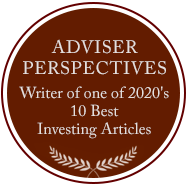INVESTING IN FOREIGN EXCHANGE
21 August 2003, Investment Advisor
In the 1990s, when George Soros made billions trading sterling or was accused of killing Southeast Asia by successfully shorting the region’s currencies, most investment advisors figured this is the kind of capitalist warfare practiced only in the rarified air of ultra high net worth. Because most money managers know very little about foreign exchange, in their minds, the image of the currency trader is something more akin to Ghengis Khan in pinstripes rather than a Peter Lynchian approach to sound, long-term investing.
But increasing consideration of currency as an asset class is showing this not to be so.
“Investors have tended to scoff at the notion of currencies as return-generating assets,” explained Euromoney in a recent cover story. “But ask any investment consultant and you will be told that currency management means less risk, and yes, added alpha.”
This realization is especially relevant given today’s market uncertainty. Three-plus years of troubled equity performance coupled with interest rate yields that barely make the switch from cash into bonds worth while have intensified the search for enhanced asset allocation.
“The appeal of foreign exchange exposure,” explains Gary Klopfenstein, president of Chicago-based GK Investment Management which specializes in currency overlays and investing, “is that it offers performance that’s uncorrelated with the stock and bond markets, with positive returns possible regardless of which way broad markets are turning.”
With $1.7 billion under management, Klopfenstein backs up his sentiment with some remarkable numbers: his GK Currency Alpha Trading program has generated 17 percent annualized returns since his firm began to exclusively focus on currency trading in 1990. As with many institutional currency programs, getting into the program requires a minimum investment of $1 million.
And Klopfenstein is hardly alone in consistently realizing gains through foreign exchange exposure.
According to International Traders Research, a La Jolla, California-based industry group which tracks the performance of a variety of managed futures, funds that focus exclusively on currency have gained an average of 4.88 percent from the beginning of 1998 through June of this year. In contrast, the Dow was up 3.27 percent, the Nasdaq, 1.81 percent, and the S&P 500, a paltry 0.36 percent over the same period of time.
Moreover, currency funds have been achieving these returns with less volatility than the broad markets. The group’s monthly standard deviation was 1.63 percent versus 5.34 percent for the Dow, 10.44 percent for the Nasdaq and 5.31 percent for the S&P 500.
“There’s the perception,” explains Jeremy O’Friel, director of the Dublin-based Appleton Capital Management that manages a number of currency programs, “that investing in foreign exchange is like climbing behind the wheel of a Ferrari—while some may tear about, it can also be driven at 30 miles per hour.”
The Inherent Appeal of Foreign Exchange
Currencies are attractive investments for several basic reasons. Foreign exchange is the largest, most liquid and efficiently-priced market in the world, trading more than $1.2 trillion every day. And it never closes. And currencies are among the most effective way to diversify a portfolio with performance that’s uncorrelated with traditional investments.
Unlike most other markets where trades are placed to make money, 80 to 90 percent of all currency investments are made by multinationals, central banks, investment managers, and tourist-related activities simply to hedge foreign exchange exposure. While specific events such as terrorist acts or SARS can cause temporary sell offs, major cross rates are generally shaped by capital flows, interest rates and economic sentiment. “With the bulk of investors are not seeking to drive exchange rates in a particular direction,” observes Klopfenstein, “there’s opportunity for the shrewd investor to latch onto these trends.”
Among the most attractive times to invest in foreign currencies is when it appears most risky–when the dollar and US economy appear strong while other places look anemic. However, it is frequently at this time that investors can purchase a large quantity of weaker foreign currencies.
Undervalued currencies often boost exports due to more competitive pricing, helping to revive corporate profitability and demand for domestic securties.
At the same time, central banks overseeing weaker currencies will often push up interest rates to increase currency demand and valuation and to counter expanding current account deficits, albeit at the risk of slowing domestic growth. Nevertheless, moving into a currency when interest rates are peaking could lead to bond gains when rates begin to fall.
Foreign exchange trading offers greater flexibility than many traditional investments. While stocks can be shorted, most brokers and investors tend to stick to long positions. Currency traders, on the other hand, can change positions on a dime, being long euro-dollar one moment, then shorting it the next if an opportunity presents itself. And taking a particular position can be done through various cross-rates. For instance, if one believes the dollar will rally, one can place bets against the euro, sterling, and Australian and Canadian dollars with the dollar being the counter currency in each instance.
Information on current foreign exchange trends and related events is becoming more readily available. Major financial dailies and magazines report regularly on rates and related actions. Many international brokerages and a number of specialty research firms regularly produce FX reports. Country-specific macro-economic data is widely available through IMF, Economist Intelligence Unit, and the World Bank, with a number offering consensus currency forecasts. And a variety of websites offer online FX trading, along with access to a host of related statistics and stories.
Most currency traders do not try to outguess the market, relying instead on systematic programs that respond exclusively to price trends. However, over the long term, exchange rates are ultimately a succinct reflection of a country’s economic, political, and social conditions and outlook, making currency a unique and intriguing security in which to invest.
For instance, when the euro was fetching a mere $0.83, hindsight was not required to know that it was grossly undervalued.
When the South African rand lost more than half its value during the last four months of 2001 for no apparent reason, those who kept sight of the country’s commitment to responsible monetary and fiscal policies, along with its underlying resources and potential wealth, were well rewarded. The currency rebounded to its former strength over the subsequent 18 months.
The most disciplined eastern European currencies, whose countries are poised to join the European Union, may strengthen as they attempt to qualify for EMU [the precursor to common currency] and subsequent membership into the euro. During the mid-1990s, a host of weak Mediterranean currencies offered a comparable convergence play, enabling prescient investors to significantly profit as the Italian lire, Spanish peseta, and Greek drachma strengthened on their way into euro membership.
ABCs of Foreign Exchange
Simply put, an exchange rate is a reflection of international supply and demand for a country’s currency. Key influences include interest and inflation rates, capital flows, balance of trade and current account balances, government balances and debt levels, and economic and political outlook.
Technical and fundamental analyses are useful tools for projecting foreign exchange movement. However, casual observers must be mindful that analysts and journalists often rely on diametric logic to help explain why a currency strengthened one day, then fell the next.
For most brokers and advisors, currency is rarely a consideration, surfacing only when purchasing foreign securities. And then it tends to be treated as a risk rather than an opportunity.
By inverting investment strategy for five to ten percent of your assets, advisors can focus on solid currencies that appear cheap and then look at foreign securities as the vehicles for playing the currency.
After its initial surge to $1.181 upon its introduction in 1999, the euro proceeded to decline against the dollar for nearly the next two years. When it closed at $0.839 on November 24, 2000, euro-denominated securities had lost 29 percent of their value due to the effects of currency translation alone.
For the next 15 months, the euro tried several times to rebound, only to find its value tracing back near its historic lows. While that may have appeared discouraging to those who were long the euro, the trading pattern appeared to have been creating a bottom.
When the euro closed on February 27, 2002 at $0.864, a number of analysts were still far from certain which way the currency was heading. But from that day forward, the euro proceeded to rally for the next 15 months, surpassing $1.19 by the end of May 2003, completing a full recovery from where it had started trading nearly three and a half years earlier.
Just as with a stock, waiting for a currency to break out of a downward trajectory and establish an upward trend helps reduce risk of being on the wrong side of a long bet. Still, traders set quick stop-loss orders to get out when a trend shows signs of breaking down.
Because the ascent of the euro to $1.19 was remarkably quick, uninterrupted by serious correction, many traders were able to capture a significant portion of the runup. And advisors who had moved into higher-yielding eurozone sovereigns did very well not only through currency appreciation but by declining yields that pushed up bond prices.
Before the Australian dollar began its strong flight starting in April 2001 after the currency had fallen below $0.50, foreign investors were nervous about putting their money down under as GDP significantly slowed and lending rates were approaching double digits. But where the rest of the developed world had fallen into recession, the Aussie economy continued to expand. Government sustained responsible fiscal and monetary policies. And commodities—a key staple of the economy–had begun to rebound.
An easy way to have established a long Aussie-dollar position was through some of the country’s largest bank stocks. Throughout the slowdown, they remained in bull mode, paying out dividends between 5 and 7 percent. After faltering in the aftermath of the Balli terrorist bombing last October, many of their ADRs proceeded to tack on 40 to 50 percent, aided by a rebounding Aussie dollar, which by early July had broken past $0.68, reflecting a rise of 36 percent against the greenback over two and quarter years.
Holding securities with attractive payouts may increase risk tolerance. But only to a small degree. Currency moves can easily negate the most attractive yields.
Strategies for Gaining Currency Exposure
There are many different ways to gain foreign exchange exposure. The first set of solutions discussed below are simple, self-directed approaches involving low minimums. The second group are more sophisticated means of investing in foreign exchange, that in most instances hand over management to a third party and generally involves much larger minimums.
Buying shares in foreign companies is the easiest way to gain foreign currency exposure. Owning ADRs of British global bank HSBC, for instance, makes you long sterling. At the same time, it pays an attractive dividend of more than 4 percent and gives you stock market exposure.
To avoid equity risk all together, investors could instead buy shorter-term fixed income securities, such as those of AAA-rated sovereigns, multinationals, and supranationals. Their prices and yields are much more stable and predictable than stocks, and repayment of capital is virtually assured when held to maturity.
General Electric, for instance, often raises capital in various foreign markets to finance ventures and acquisitions, offering investors a means to gain currency exposure through a reliable name.
St. Louis-based Everbank World Markets offer certificates of deposits in a wide variety of currencies. While yields are less than those being paid in the home markets, the bank does provide efficient exchange rates and trade execution. Accounts can be set up directly with a number of foreign banks. But the process can be complicated, access more cumbersome, and may expose investors to a host of unexpected fees.
International mutual funds that do not hedge their currency exposure are naturally short the dollar. For specific currency exposure, look to single currency funds, such as iShares. While they trade in dollars, their underlying value is directly affected by exchange rates. Since these exchange-traded shares can be shorted, they can also provide long dollar positions.
*
Currency forwards and futures are the basic tools of the professional foreign exchange investor, offering margin trades that can generate various degrees of leverage. They are marked to market daily, exposing investors to remarkable upside and unlimited downside liability.
Forwards are customizable Interbank-traded contracts, typically $1 million-plus in size, between two parties that can last from several days to a year and beyond. They enable investors to bet for or against a currency relative to another. Forwards are generally the security of choice for most currency traders, offering greater liquidity and lower costs than futures.
Future contracts are over-the-counter agreements between two currencies that trade on various commodity exchanges in units of $125k. The Chicago Mercantile Exchange, for example, trades 13 different currencies, involving 30 different cross-rates. A limited number of the most frequently traded pairs involve smaller units of $62,500.
Multinational banks and brokerages, along with foreign exchange specialists have long offered currency overlay services, which locks in current exchange rates to secure FX costs of future business transactions. Over the past decade, firms such as State Street Global Advisors, Deutsche Asset Management and JP Morgan Fleming now offer qualified investors access to programs that invest in currency for profit.
Many private banking groups also offer comparable programs for high net worth individuals. However, both of these services tend to suffer from a lack of transparency. Reporting is limited and there is no independent coverage.
A way around this shortcoming is to invest through a commodity trading advisor or CTA. As mentioned above, a number of CTAs focus exclusively in foreign exchange have established an impressive record of steady growth during all kinds of markets with moderate volatility.
A number of industry clearinghouses track individual program performance, such as International Traders Research, the Barclay Group, Lind-Waldock, and Institutional Advisory Services Group. Two oversight agencies, the Commodity Futures Trading Commission and the National Futures Association help ensure industry integrity and provide investors with extensive information about the ins and outs of commodity trading.
The appeal of CTAs is reflected by their increasing accessibility through major brokerages, including Morgan Stanley, Smith Barney, and Merrill Lynch, which are now marketing currency funds to smaller investors, with minimums as low as $5,000.
Jeremy O’Friel’s Appleton Capital Management 25 percent Risk Program has been among the most consistent top performing currency CTA over the past five years and half years. Since January 1998 through July 2003, the fund has annualized returns of 11.90 percent, easily outdistancing itself from all major equity markets. And it has done so with a standard deviation that’s comparable to the Dow and S&P 500, and nearly half that of the Nasdaq.
Started in 1995 and now with $110 million under management, this systematically-traded program has a minimum investment of $1 million.
Like most currency traders, Appleton can make money regardless of the economic cycle or what the broad markets are doing. “Exchange rates are inherently volatile,” explains O’Friel. “But by leveraging bets on established trends and strictly managing risk, traders can be in the money when they are right just 40 percent of the time.”
What makes his fund unusual is that it focuses exclusively on just four currencies: US dollar, Japanese yen, Canadian dollar, and the euro. O’Friel explains that the program limits itself to these currencies because they are the most liquid and forecastable currencies, with the least amount of political interference. “Moreover,” posits O’Friel, “these four currencies capture most significant foreign exchange movements, reducing the need for redundant positions that helps limit execution and management costs.”
Undisciplined exposure to foreign exchange can have disastrous consequences. Risk must be understood and hedged. But the inhenrent appeal of currencies is that they offer continuous opportunities that are largely ignored by the rest of the market.
“Exchange rates, even between two industrialized countries with healthy economies,” explains Rudi Weisweiller, author of How the Foreign Exchange Market Works, “can move against each other by ten or twenty percent in a year. They can move right back again within a few weeks.” And this is what makes foreign exchange a unique and attractive alternative to traditional investments.



 GIR's Investing in the New Europe
GIR's Investing in the New Europe



